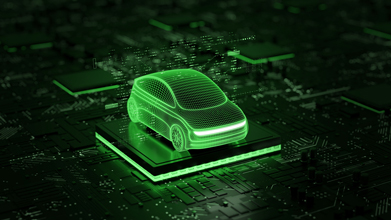Cloud native EDA tools & pre-optimized hardware platforms
Synopsys is a leading provider of electronic design automation solutions and services.
Synopsys is a leading provider of high-quality, silicon-proven semiconductor IP solutions for SoC designs.
Synopsys helps you protect your bottom line by building trust in your software—at the speed your business demands.
For years, I have been predicting that Low-Power DDR (LPDDR) devices would make the crossover from mobile devices into laptops.
That prediction came true last year when a MacBook Air was introduced that uses LPDDR3 as it’s main memory.
I recently purchased a fairly powerful Windows 8 laptop for home use and I was surprised to see on the shipping label that it was purported to contain 8GBytes of LPDDR3 SDRAM, as you can see in the above photo (manufacturer’s name obscured for reasons that will become clear later).
After having contributed to the LPDDR standards at JEDEC for years and predicting their arrival in laptops for some time, I was pretty excited to become the second person in my household to own a device containing LPDDR3. In fact, the 4th generation Intel Core (TM) processor in my laptop does support LPDDR3 devices, according to its databook.
Alas, it was a little too good to be true. Digging in to the laptop’s service and maintenance manual, I found that the memory in my new laptop was actually DDR3L and not LPDDR3. I’m sure it was an honest mistake on the part of the laptop manufacturer and not an intent to mislead anyone; I am probably one of a handful of people in the world where the kind of memory inside would influence my purchasing decision. It’s also partly true; DDR3L is a lower-voltage (and thus lower power) version of DDR3, but the term “LPDDR3″ refers to a specific DRAM implementation that is not DDR3.
So what’s the difference between DDR3, DDR3L and LPDDR3? I get that question a lot, and there are a lot of differences. I have summarized some of the key differences in the table below. The short summary is, LPDDR3 is more expensive but has much lower standby power and a better form factor for mobile devices; while DDR3 and DDR3L are less expensive and consume more power but are more suitable for larger memory arrays found in PCs and servers.
How’s the laptop? Great, I love it. It replaces an aging desktop, so the use model is similar to the old desktop, but with the added benefit of being more portable around the house. I’ve seen people carrying around 17” laptops before I didn’t appreciate how big it really is until I owned one. It’s got a giant battery and it’s never far from a power socket, so I don’t miss the power savings from LPDDR3 at all in this laptop, but I will definitely be looking for LPDDR3 or LPDDR4 in my next mobile device purchases.


Continue Reading
Why You Need to Consider Energy Efficiency of Your HPC SoC Early On

Apr 01, 2024 / 4 min read
Why Is the Power Device Market So Hot Right Now?
Jan 24, 2024 / 4 min read
Driving Higher Energy Efficiency in Automotive Electronics Designs

Jan 17, 2024 / 4 min read










